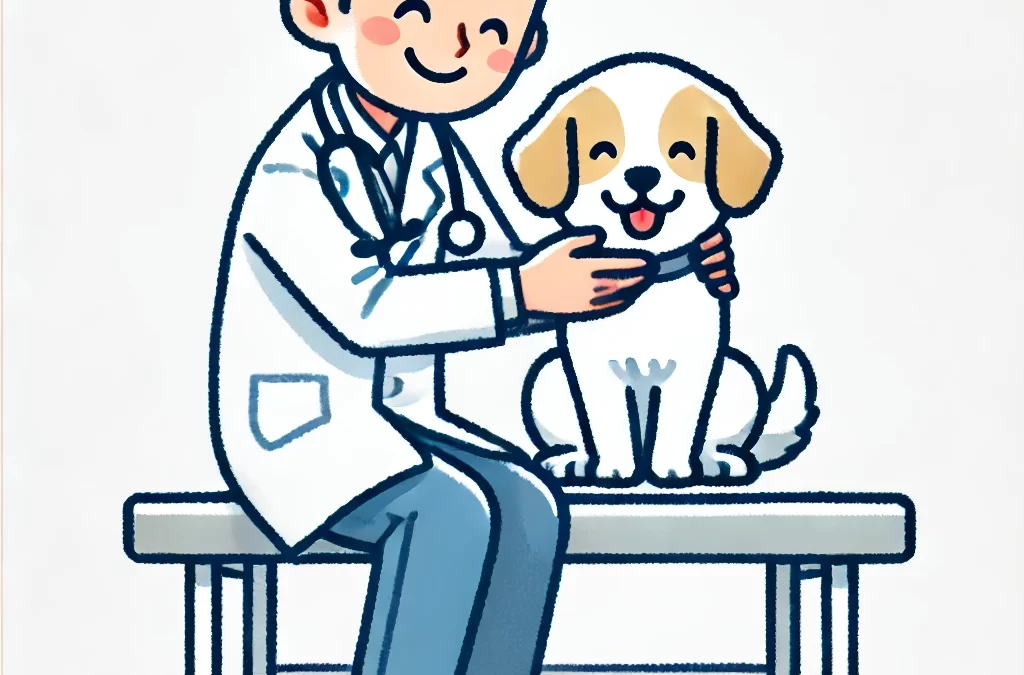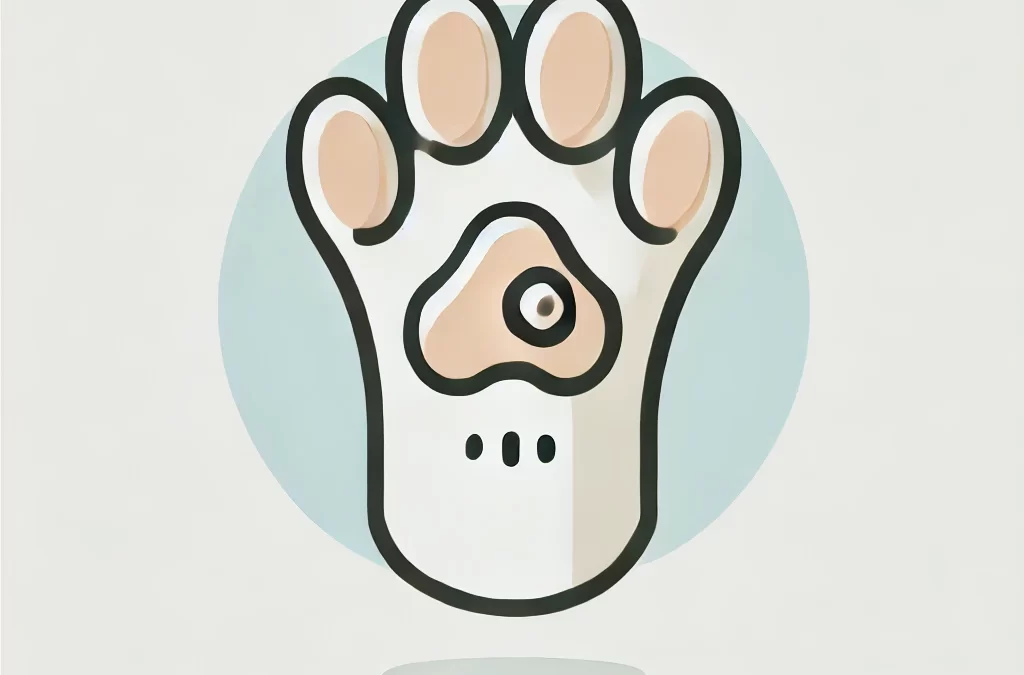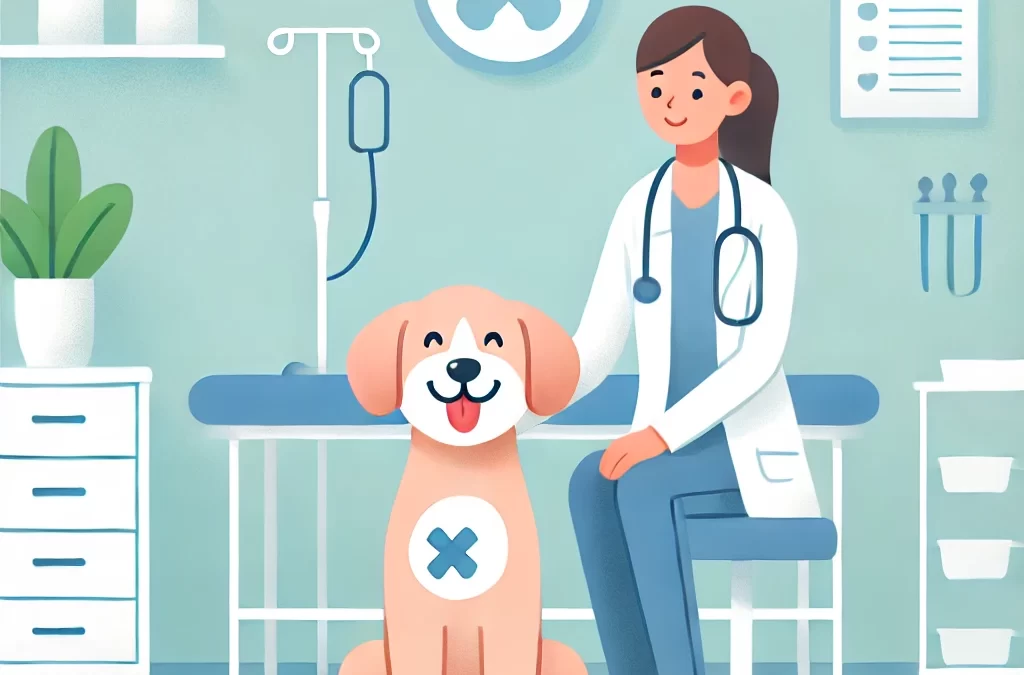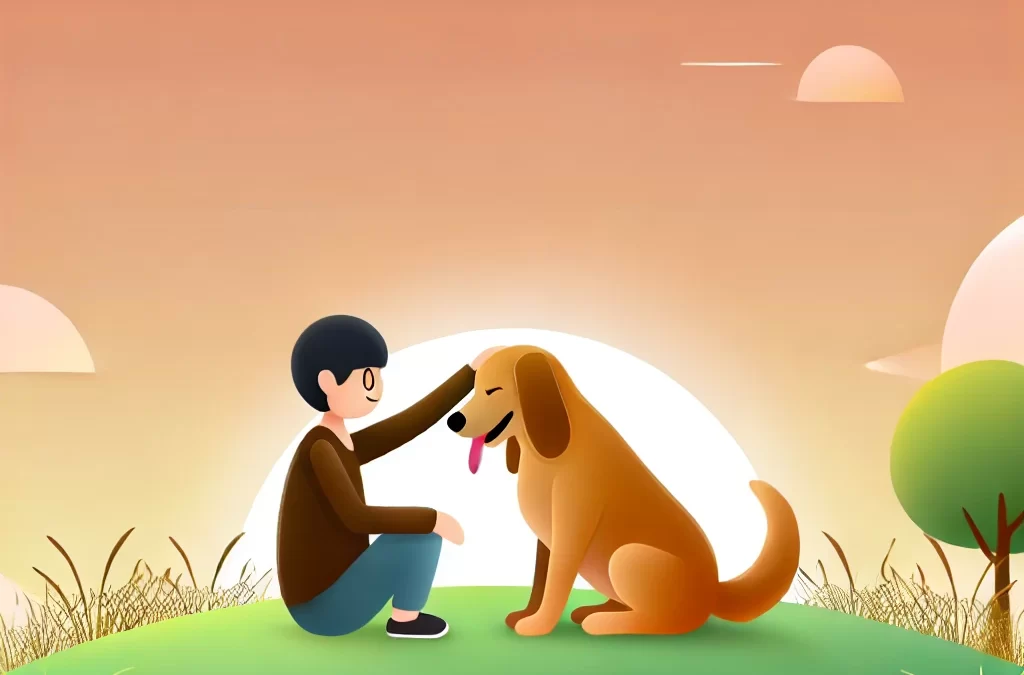
經過 TCMVET | 2024 年 11 月 29 日 | 狗癌症和腫瘤
當面對狗的腫瘤診斷帶來的情緒和經濟負擔時,許多寵物主人對與治療相關的費用感到不知所措。然而,低成本的狗腫瘤切除不僅是可能的,而且只要有適當的資源和一點創造力就可以實現。本指南探討了獨特而實用的方法,以確保您的毛茸茸的朋友得到他們需要的護理,而不會讓您的錢包緊張。
了解腫瘤類型和切除的必要性
並非所有腫瘤都需要立即手術介入。有些腫瘤,例如脂肪瘤(良性脂肪瘤),可能對您的狗的健康幾乎沒有威脅。諮詢您的獸醫以評估腫瘤的性質是做出明智決定的第一步。如果認為有必要移除,請探索具有成本效益的方案來解決該問題。
經濟實惠的狗腫瘤切除的創造性方法
獸醫學校:學習和儲蓄
獸醫教學醫院通常提供成本較低的服務,讓學生在經驗豐富的專業人員的指導下執行手術。在降低成本的同時,護理品質仍然很高,這對於精打細算的寵物主人來說是一個絕佳的選擇。
非營利獸醫診所
許多非營利組織和動物福利組織提供獸醫護理補貼,包括腫瘤切除服務。您所在地區支持低收入寵物主人的研究組織,例如人道協會或防止虐待動物協會分支機構,它們可能會提供經濟援助。
眾籌平台
GoFundMe 或 Waggle 等平台允許寵物主人分享他們的狗的故事並為醫療程序籌集資金。衷心的敘述和照片可以鼓勵捐贈者為您的寵物的福祉做出貢獻。
當地獸醫的付款計劃
一些獸醫診所願意為昂貴的手術制定付款計劃。此選項可讓您將成本分攤到幾個月內,從而減輕直接的財務負擔。
DIY 恢復和善後護理
雖然手術本身應始終由有執照的獸醫進行,但您可以透過在家中管理術後護理來節省金錢。了解如何清潔傷口、給藥以及為您的狗創造一個舒適的康復空間,以盡量減少額外的就診次數。
探索替代方案:當手術不是一種選擇時
如果手術超出您的經濟能力或由於您的狗的健康狀況而不建議進行手術,替代療法可以幫助控制腫瘤。一些整體選項包括:
- 草藥補充劑:薑黃、乳香等自然療法和川芎等中藥配方因其抗發炎特性而聞名。
- CBD 油:全譜 CBD 油可能有助於減少發炎並支持整體健康。
- 飲食調整:以天然、低碳水化合物、高蛋白質食物為主的抗癌飲食可能會減緩腫瘤的生長。
避免未來成本的預防措施
預防性護理可以先減少腫瘤形成的可能性。定期獸醫檢查、均衡飲食以及避免接觸菸草煙霧等致癌物質可以促進您的狗過上更健康的生活。早期發現是關鍵;小腫瘤通常比晚期腫瘤更容易治療且更便宜。
同情心與獨創性:平價醫療的關鍵
尋找低成本的狗腫瘤切除方案需要足智多謀和決心。透過利用非營利組織、社區支持和替代療法,您可以確保您的狗獲得所需的護理,而不會陷入財務困難。請記住,您的創造力和對寵物的愛可以為富有同情心和有效的解決方案鋪平道路。
無論是透過與負擔得起的護理提供者網絡聯繫還是採用整體方法,您的狗的健康都不必付出難以克服的代價。讓這趟旅程提醒我們寵物和主人之間堅定不移的連結——這段關係值得付出一切努力。

經過 TCMVET | 2024 年 11 月 28 日 | 狗癌症和腫瘤
當你的狗開始跛行或過度舔爪子時,罪魁禍首可能是指間囊腫——這種情況既常見又令人擔憂。雖然這些囊腫通常是良性的,但它們的出現有時會讓寵物主人產生疑問:這是否是癌症等更險惡疾病的徵兆?讓我們以新的視角深入研究這個主題,探索它們之間的區別、潛在的聯繫,以及如何最好地解決這些問題,以保證您的狗的福祉。
什麼是指間囊腫?
指間囊腫,也稱為癤,是在狗的腳趾之間形成的充滿液體的腫塊。它們是由指間毛囊發炎引起的,通常由以下原因引起:
- Trauma:爪子上有割傷或擦傷。
- 過敏:環境或食物過敏導致過度舔舐。
- 遺傳傾向:某些品種,例如鬥牛犬和拉布拉多獵犬,更容易發生這種情況。
- 異物:碎片或碎片嵌入皮膚。
雖然指間囊腫通常是非癌性的,但其反覆發作可能會導致不適、感染,甚至跛行。
指間囊腫與癌症有關嗎?
簡短的回答:很少,但並非完全不可能。
大多數指間囊腫是良性的,與癌症無關。然而,隨著時間的推移,持續性囊腫引起的慢性發炎可能會創造一個有利於更嚴重病症的環境。這種現象稱為 慢性發炎驅動的致癌作用,強調了長期刺激可能會增加組織惡性變化的風險。
此外,在極少數情況下,最初被確定為囊腫的腫塊實際上可能更嚴重,例如:
- Squamous Cell Carcinoma (SCC):一種皮膚癌,可能發生在爪墊或腳趾之間。
- 肥大細胞腫瘤 (MCT):這些腫瘤雖然在其他地方很常見,但偶爾也會出現在爪子等不尋常的位置。
- 黑色素瘤:惡性黑色素瘤也可能出現在爪墊附近,類似囊腫樣生長。
如何區分囊腫和癌症
正確的診斷至關重要。以下是需要注意的事項:
- 形狀和紋理:囊腫通常柔軟、圓形且充滿液體。腫瘤可能感覺堅硬且不規則。
- 成長率:良性囊腫生長緩慢,而惡性腫瘤通常生長迅速。
- 顏色和潰瘍:癌症可能會變色、潰爛或自發性出血。
- 對治療的反應:囊腫通常對抗生素、抗發炎藥物或引流有反應,而癌性生長則不然。
獸醫可能會建議進行細針抽吸 (FNA) 或活檢等診斷測試,以確認腫瘤是良性還是惡性。
爪子健康的整體和預防性護理
即使囊腫是非癌性的,預防和整體護理也可以改善您的狗的生活品質:
- 爪子衛生:定期清潔可以降低異物嵌入狗狗爪子的風險。
- 飲食調整:Omega-3 脂肪酸和抗炎補充劑可以減少發炎並促進皮膚健康。
- Natural Remedies: Products like TCMVET百凸消 或以薑黃為基礎的乳膏可能有助於減少復發性囊腫的發炎。
- 適度運動:對於容易受傷的活躍狗,請考慮在較軟的地形上散步,以避免割傷和擦傷。
當需要手術或高級治療時
對於持續性或複雜的囊腫,可能需要手術切除受影響的組織。在極少數疑似惡性腫瘤的病例中,可能需要截肢受影響的腳趾以防止癌症擴散。雷射手術或冷凍療法等先進療法也可以為某些病例提供非侵入性解決方案。
重點:知識就是力量
指間囊腫雖然常見且大多是良性的,但絕不應被忽視。保持警覺、諮詢獸醫並採取積極主動的方法可以對確保狗的爪子健康產生重要影響。請記住,即使癌症的幽靈出現,早期檢測和現代治療也能提供有希望的結果。
我們毛茸茸的朋友依賴我們的照顧和保護。透過了解指間囊腫等疾病的細微差別,我們可以為他們提供長壽、健康和幸福生活的最佳機會。

經過 TCMVET | 2024 年 11 月 28 日 | 狗癌症和腫瘤
當心愛的寵物被診斷出腫瘤時,情緒上的壓力會讓人感到難以承受。手術常常成為希望的焦點,但它總是最好的選擇嗎?讓我們探索寵物腫瘤手術的變革之旅、重塑景觀的替代方案,以及整體護理如何重新定義我們毛茸茸的伙伴的康復。
歷史視角:手術作為救星
在獸醫學的早期,手術是針對腫瘤的最終治療方法。隨著技術的進步,雷射手術和機器人輔助等技術已變得普遍,使手術變得更安全、更精確。例如,如今的寵物腫瘤手術可以實現小至一毫米的邊緣,在切除腫瘤的同時保留健康組織。
然而,手術路徑並非沒有風險。寵物的年齡、腫瘤的大小和位置以及潛在的健康狀況等因素都會影響成功率。儘管手術可以有效去除腫瘤,但它通常只能解決症狀,而不是根本原因。
替代方案:越來越多的選擇
雖然手術仍然是基石,但替代方法正在獲得關注:
- 冷凍手術:使用極冷冷凍和破壞腫瘤細胞,這種方法侵入性較小,非常適合表面生長。
- 標靶治療:免疫療法和分子標靶藥物等獸醫學創新正在允許非手術腫瘤治療。這些治療旨在縮小腫瘤或減緩其進展。
- 自然療法: 草藥如 TCMVET百凸消 以大麻為基礎的補充劑因其支持免疫系統和抑制腫瘤生長且副作用最小的能力而變得流行。
- 安寧療護:對於患有無法手術的腫瘤的寵物,舒適度成為首要任務。疼痛管理、飲食調整和物理治療在維持生活品質方面發揮著至關重要的作用。
權衡決定:削減還是不削減?
選擇手術或替代方案取決於多種因素:
- 腫瘤類型:良性腫瘤可能不需要立即手術,而惡性生長通常需要立即採取行動。
- 生活品質:該手術是否可能改善寵物的健康,或是否會帶來過度的壓力和疼痛?
- 業主的目標:有些業主優先考慮長壽,而有些業主則注重舒適度和整體護理。
諮詢獸醫腫瘤學家對於確保考慮寵物獨特需求的客製化治療計劃至關重要。
整體治療:超越手術刀
術後護理與手術本身同樣重要。整體方法越來越多地被納入恢復計劃中:
- 營養療法:富含抗氧化劑、omega-3 脂肪酸和抗癌化合物的飲食至關重要。
- 針灸按摩:這些療法可以減輕疼痛、促進血液循環並加速癒合。
- 情感支持:與人類一樣,寵物在康復期間受益於無壓力的環境。度過美好時光、進行溫和的玩耍以及保持日常生活習慣可以振奮他們的精神。
寵物腫瘤手術的未來
獸醫腫瘤學領域正在迅速發展。 AI 導引診斷和 3D 列印手術工具等創新有望實現更精確、更有效的干預措施。此外,對寵物腫瘤遺傳基礎的研究正在為預防策略鋪路。
隨著這些進步的展開,關於寵物腫瘤手術的敘述正在轉變——從恐懼到希望,從被動護理到主動護理。
最後的想法
無論是選擇手術還是探索替代方案,最終目標始終是相同的:為我們的寵物提供盡可能最好的生活。憑藉同情心、明智的決策和獲得尖端護理的機會,我們可以共同渡過這一充滿挑戰的篇章並變得更加強大。
當面對腫瘤診斷時,請記住:您是寵物的倡導者和最大的捍衛者。你所做的每一個決定都源自於愛,這讓一切變得不同。

經過 TCMVET | 2024 年 11 月 27 日 | 狗癌症和腫瘤
Tigilanol tiglate 是一種針對某些類型的犬腫瘤的突破性治療方法,已成為獸醫腫瘤學領域的遊戲規則改變者。當寵物主人探索這種創新療法時,許多人擔心其成本。但關於成本的討論是否超出了貨幣數字?讓我們以獨特的視角來探討 Tigilanol tiglate 的價值,不僅關注它的成本,也關注它提供的回報。
了解Tigilanol Tiglalate
tigilanol tiglate(商品名為 Stelfonta®)由紅木樹的種子開發而成,為狗的肥大細胞腫瘤提供了一種非手術解決方案。透過注射給藥,它的作用是破壞腫瘤細胞並促進傷口癒合,通常在幾天內就能看到明顯的效果。這種創新療法對於因年齡、健康狀況或腫瘤位置而不適合手術的狗特別有吸引力。
財務成本
替吉拉醇的價格差異很大,取決於以下幾個因素:
- 腫瘤大小
該藥物根據劑量定價,劑量由腫瘤的體積決定。較大的腫瘤需要更高的劑量,從而增加了成本。
- 獸醫費
管理費用包括治療前評估、鎮靜、手術本身和後續護理。這些專業費用可能因地點和診所而異。
- 治療後護理
雖然許多狗恢復得很快,但有些狗可能需要額外的傷口處理,這會增加整體成本。
平均而言,Tigilanol tiglate 處理的成本範圍為 $500 至 $2,500 或更多,取決於上述因素。
情感成本
雖然財務費用很高,但也必須考慮到治療心愛的寵物所造成的情感損失。 Tigilanol tiglate 為侵入性手術提供了一種引人注目的替代方案,減少了寵物及其主人的壓力並縮短了恢復時間。
- 減少你的狗的焦慮
手術通常需要更長的恢復期和更高的風險,特別是對於老年犬來說。 Tigilanol tiglate 最大限度地減少了這些挑戰,提供了一種侵入性較小的解決方案。
- 讓業主安心
即時觀察腫瘤縮小可能是一種情感上有益的體驗。對許多人來說,可見的、即時的結果證明了成本的合理性。
成本與價值
在評估Tigilanol tiglate的價格時,必須考慮其價值:
- 生活品質: 該治療的重點是保持和增強狗的健康,而不存在與手術相關的風險。
- 節省時間: 透過單次注射,治療通常無需漫長的恢復期。
- 情緒舒緩: 對於正在與狗的診斷負擔作鬥爭的寵物主人來說,看到快速改善的能力是無價的。
隱藏的儲蓄
雖然前期成本看起來很高,但 Tigilanol tiglate 可以提供間接節省:
- 避免手術相關的併發症及其相關費用。
- 減少對腫瘤管理持續治療或藥物的需求。
- 透過早期介入預防未來的腫瘤相關問題。
購買 Tigilanol Tiglate:給寵物主人的提示
對於那些擔心負擔能力的人,可以探索以下一些提示:
- Pet Insurance: 檢查您的保單是否涵蓋替吉諾替吉拉酯等高級治療。
- Payment Plans: 許多獸醫診所提供分期付款計劃來幫助管理費用。
- 非營利援助: 致力於寵物照護的組織有時會為關鍵治療提供經濟援助。
- 提前預算: 儘早為寵物的醫療保健進行財務規劃可以減輕意外費用的負擔。
最後的想法
替吉諾爾替吉拉酯的成本不僅僅是一個數字,它是希望、創新和關懷的衡量標準。雖然這種治療方法可能不適合所有預算,但它透過提供微創、有效的治療肥大細胞腫瘤的選擇,為狗及其家人提供了無與倫比的價值。對許多人來說,問題不僅僅是“要花多少錢?”而是“不嘗試的代價是什麼?”
當您為狗狗進行治療時,請記住,護理的價格不僅包括花費的金錢,還包括您在一起的時光。 Tigilanol tiglate 代表了一個未來,更多的狗可以過著更健康、更幸福的生活——這是對愛、長壽和陪伴的投資。

經過 TCMVET | 2024 年 11 月 27 日 | 狗癌症和腫瘤
決定何時與被診斷患有癌症的心愛的狗說再見是任何寵物主人面臨的最艱難的決定之一。雖然每個案例都是獨一無二的,但本文為這個充滿情感的主題提供了另一種視角——關注愛、生活質量,以及在放手之前創造有意義的回憶。
了解你的狗的旅程
患有癌症的狗和人類一樣,會經歷一系列的身體和情緒狀態。了解他們的狀況可以幫助您做出明智的決定:
- 疼痛程度: 疼痛通常是第一個指標。儘管安寧療護取得了進步,但有些狗可能會經歷持續的不適。
- 流動性問題: 觀察您的狗狗是否仍可享受散步或玩耍等活動。失去行動能力可能意味著他們的生活品質下降。
- 食慾變化: 突然拒絕進食或飲水可能意味著他們的身體正在停止運作。
- 情緒變化: 狗是情感動物。注意你的狗是否顯得孤僻、焦慮或對周圍的環境不感興趣。
新框架:「五樂」方法
不要只專注於狗狗的衰退,而是考慮用這種方法來評估您的狗的生活品質。問問自己:
- 吃: 您的狗仍然喜歡它們最喜歡的食物嗎?
- 舒適睡眠: 他們休息時是否沒有疼痛或痛苦的跡象?
- 社交互動: 他們尋求陪伴還是喜歡被撫摸?
- 播放: 他們是否從事自己喜歡的活動,即使是以有限的方式?
- 探索: 他們對自己的環境表現出興趣嗎?
當其中三種或三種以上的快樂持續缺失時,可能是時候考慮安樂死了。
說再見:整體方法
說再見不一定感覺像是一章的突然結束。以下是在簡化過渡過程的同時尊重您的狗的旅程的方法:
- 創建遺願清單
透過創造歡樂的時刻來慶祝你的狗的一生。它可以像在他們最喜歡的公園野餐或分享特別的款待一樣簡單。
- 注重舒適度
提供一個平靜、熟悉的環境。使用舒適的寢具、輕柔的按摩和芳香療法來緩解壓力。
- 與您信任的獸醫溝通
富有同情心的獸醫可以指導您識別衰退的跡象,並幫助您計劃平靜的去世。
- 考慮家庭安樂死
許多寵物主人選擇在家中安樂死服務,讓他們的狗在熟悉的環境中度過,周圍都是親人。
- 保護他們的遺產
製作紀念品,例如爪印模具或珍貴照片的剪貼簿。這可以幫助您處理悲傷,同時慶祝您的狗的生命。
重新定義最後的告別
安樂死不只是一個臨床決定,更是一種愛的行為。透過選擇讓你的狗和平離開,你可以讓它們免受不必要的痛苦並尊重它們的尊嚴。與其專注於“何時放手”,不如將你的視角轉向“如何讓他們的最後時刻變得有意義”。
重點:悲傷是可以的
悲傷是這個過程的自然組成部分。這是您與您的狗之間深厚感情的證明。向朋友、家人甚至寵物愛好者的線上社群尋求支持,他們了解您正在經歷的事情。
最後,這個決定是非常個人化的。相信你的直覺,尊重你的狗獨特的旅程,並知道決定你與寵物關係的是愛,而不是時間。

經過 TCMVET | 2024 年 11 月 26 日 | 狗癌症和腫瘤
當寵物父母聽到「腫瘤」這個詞時,就像是一記重拳打在了他們的腸子上。問題如潮水般湧來:它會癌變嗎?我的狗會沒事嗎?最重要的是, 我能提供什麼幫助嗎? 雖然現代獸醫提供了多種治療方法,但許多主人正在轉向自然、整體的方法來補充傳統護理。讓我們探索一些創新且鮮為人知的方法來幫助控制和縮小狗的腫瘤。
狗腫瘤的性質
狗的腫瘤範圍從良性脂肪瘤到惡性癌症,如肥大細胞瘤或骨肉瘤。治療計劃取決於腫瘤的類型、大小和階段,但解決問題通常涉及傳統治療(如手術或化療)和支持療法的組合,以促進整體健康。
但問題是:並非所有治療方法都必須是侵入性或合成的。大自然為我們提供了豐富的資源,可以幫助縮小腫瘤,同時支持您的狗的健康。
營養支持:食物作為藥物
- 蘑菇發電廠
藥用菇如 香菇, 靈芝, 和 火雞尾 富含β-葡聚醣,有助於調節免疫系統並可能減緩腫瘤生長。獸醫腫瘤學研究表明,這些真菌可以減少某些癌症的進展。在你的狗的食物中撒上一點蘑菇粉補充劑可能會改變遊戲規則。
- 金膏(薑黃混合物)
薑黃以其活性化合物而聞名, 薑黃素,一種強大的抗炎和抗氧化劑。一些研究顯示薑黃素可以破壞癌細胞的生長。將薑黃粉與椰子油和黑胡椒混合,製成適合狗狗的金色糊狀物。
- Omega-3 脂肪酸
omega-3 存在於魚油或亞麻籽中,是一種天然抗發炎劑,可以減緩腫瘤的生長並支持整體健康。將其添加到您的狗的膳食中,以實現簡單但有效的飲食促進。
腫瘤治療的天然補充劑
- CBD油
大麻二酚(CBD)因其潛在的抗腫瘤作用而受到關注。據信它可以誘導癌細胞凋亡(程序性細胞死亡)並減少發炎。請務必選擇不含 THC 的寵物專用 CBD 油,並諮詢您的獸醫以了解正確的劑量。
- 艾西亞克茶
Essiac 茶是牛蒡根、滑榆和酢漿草等草藥的混合物,長期以來一直被用作治療腫瘤的天然藥物。它有液體或膠囊形式,被認為有助於身體排毒並縮小異常生長。
- 川芎(四川獨生)
川芎是一種鮮為人知但有效的傳統中草藥,具有改善循環和減少發炎的特性。一些整體獸醫建議將其作為治療腫瘤的草藥方案的一部分。
整體療法
- 針刺
雖然針灸不能直接縮小腫瘤,但它可以改善血流、減輕疼痛並增強其他治療的療效。這是多方面護理計劃的一個很好的補充。
- 高壓氧治療 (HBOT)
腫瘤在低氧環境中茁壯成長。高壓氧療法使身體充滿氧氣,有可能減緩腫瘤生長並有助於癒合。
生活方式調整
- 飲食調整
低碳水化合物、高蛋白飲食可以使某些依賴糖生長的腫瘤挨餓。考慮根據您的狗的具體需求量身定制生食或熟食。
- 減輕壓力
慢性壓力會抑制免疫系統,使您的狗更難抵抗疾病。確保您的狗的環境安靜並充滿它們喜歡的活動。
- 環境排毒
減少接觸有害化學物質,如殺蟲劑、合成空氣清新劑和加工食品。這些環境毒素會給你的狗的系統帶來負擔,使康復變得更加困難。
現代與自然方法結合的力量
雖然自然療法提供了令人難以置信的好處,但它們並不是適合所有狗的獨立解決方案。與了解綜合護理的獸醫合作至關重要。這可以確保您的狗獲得兩全其美:現代醫學的救生力量和自然療法的溫和支持。
充滿希望的前景
幫助您的狗完成腫瘤診斷的過程可能會令人畏懼,但請記住:您並不孤單。透過飲食改變、天然補充劑和整體療法的結合,您可以給您的狗一個戰鬥的機會,同時提高它們的生活品質。
有時,最小的變化——一點薑黃、一匙蘑菇粉或一滴 CBD——就能產生最大的差異。






